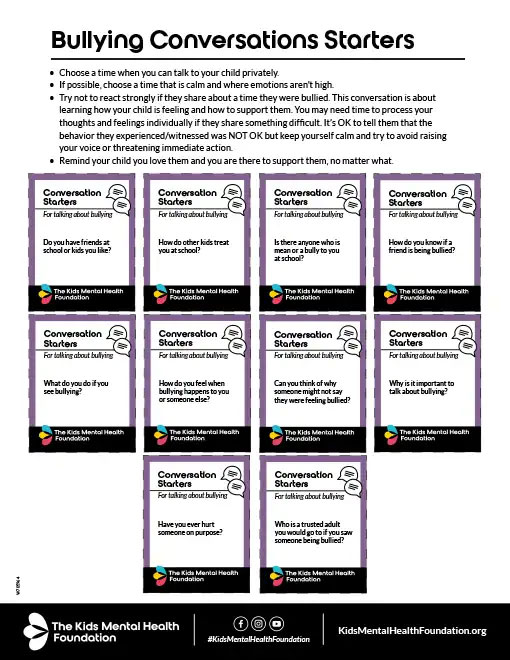- Bullying can stem from a child’s own emotional struggles, a lack of empathy, wanting control or past trauma. Children may also copy aggressive behavior they’ve seen at home, in school or in media.
- Kids who bully often face emotional challenges like low self-esteem, loneliness or depression, and are at higher risk for mental health concerns, including suicidal thoughts.
- Adults can support kids who bully others. Talk openly with your child and really listen. Show empathy in your own actions. Set clear and consistent rules. Work with teachers and schools to support positive behavior. Encourage healthy friendships and, when needed, reach out for professional help.
Bullying in Kids: What Parents Need to Know and How to Help
Article Summary
- Bullying is intentional harm that can be verbal, social or physical. Bullying can have negative mental health effects on the victim, the bully and witnesses.
- Talking with children about bullying can help them recognize it, know how to respond and think about trusted adults they can turn to for support.
What Is Bullying?
Intentionally hurting someone else verbally, socially or physically.
According to the CDC, 10% elementary schools, 28% of middle schools, and 15% of high schools reported bullying at least once a week.
What Are the Types of Bullying?
Bullying can take several forms, including:
- Verbal: Saying, writing or posting something negative about someone
- Social: Harming someone’s reputation, or not including them in groups or activities
- Physical: Hurting someone’s body or their possessions
What Are the Mental Health Effects of Bullying?
Bullying affects the mental health of everyone involved, including the person doing the bullying, the person being bullied and all who see it happening.
Each child’s response to bullying will be different. For some children, the psychological damage will be minimal while others will experience more significant mental health symptoms. Sometimes, the psychological damage of bullying can last into adulthood affecting career choice, self-esteem, relationships, decision-making skills and overall success.
Children may:
- Show signs of depression and anxiety, such as not wanting to go to school, becoming withdrawn, being tearful or unusually emotional. Evidence suggests that bullying is one of many risk factors for youth suicide. Suicide is not a typical reaction to bullying and thoughts of suicide or self-harm suggest that the child is in a great deal of emotional pain.
- Experience physical symptoms such as a stomachache
- Display behavioral problems, including emotional outbursts, refusing to follow directions or participate in activities and conflict with family and peers
- Experience academic difficulties
Talking to Kids About Bullying
It’s good to talk with kids about bullying to make sure they understand what it is and what they can do if they experience bullying or how to help if they see bullying happening.
Starting a conversation is a great way to find out what your child knows about bullying and who they feel comfortable talking to about it.
Use these conversation starters to help you get started and download all of them below. Ask things like:
- Do you know what bullying is?
- How do other kids treat you at school (or church, sports team, etc.)?
- What do you do if you see bullying?
- Who is a trusted adult you would go to if you saw someone being bullied?
Providing an open ear, educating youth on the impact of bullying and violent behavior, increasing empathy and teaching skills to combat this behavior will impact the culture of bullying in our society. We all have a role to play.
References
U.S. Centers for Disease Control. Youth Violence Prevention. Centers for Disease Control. Accessed August 2025.
 Copy Link
Copy Link




